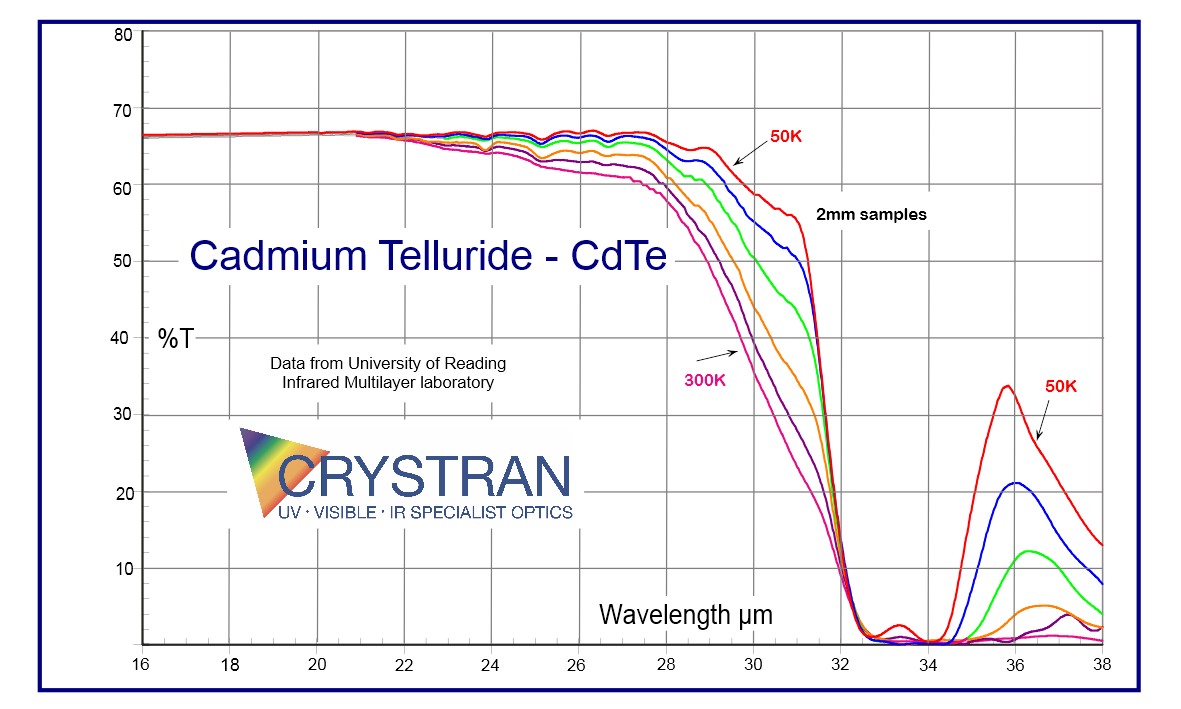

Cadmium Telluride (CdTe)
Cadmium Telluride can be used for spectroscopy and where deep IR transmission is required. It is relatively workable and offers transmission to >20 microns. The data is for information only. We cannot supply this material.


| µm | No |
|---|---|
| 0.8 | 2.876 |
| 1.0 | 2.840 |
| 2.0 | 2.713 |
| 2.5 | 2.702 |
| 3.0 | 2.695 |
| 3.5 | 2.691 |
| 4.0 | 2.6807 |
| µm | No |
|---|---|
| 5.0 | 2.684 |
| 6.0 | 2.681 |
| 7.0 | 2.679 |
| 8.0 | 2.677 |
| 10.0 | 2.653 |
| 12.5 | 2.646 |
| 15.5 | 2.6407 |
| µm | No |
|---|---|
| 20.0 | 2.614 |
| 22.2 | 2.601 |
| 24.8 | 2.5801 |
| 26.32 | 2.570 |
| 27.03 | 2.564 |
CdTe is rarely used because of its toxicity. The finished optics are not particularly hazardous but should be handled with care. However, difficulties with processing cadmium compounds means that very few optical companies will cut and polish the material. Crystran Ltd does NOT supply CdTe. This data is provided for reference only.
A form of CdTe was originally utilised as the obsolete Kodak designation of IRTRAN-6
CAUTION: Cadmium salts are TOXIC and should be handled with care.
REFERENCES:
(1) Handbook Optical Constants, ed Palik, V1, ISBN 0-12-544420-6
(2) NIST USA data
(3) Hawkins, Sherwood, Djotni: Mid IR Filters for astronomical and remote sensing instrumentation. Invited Paper SPIE Conference Glasgow 2008